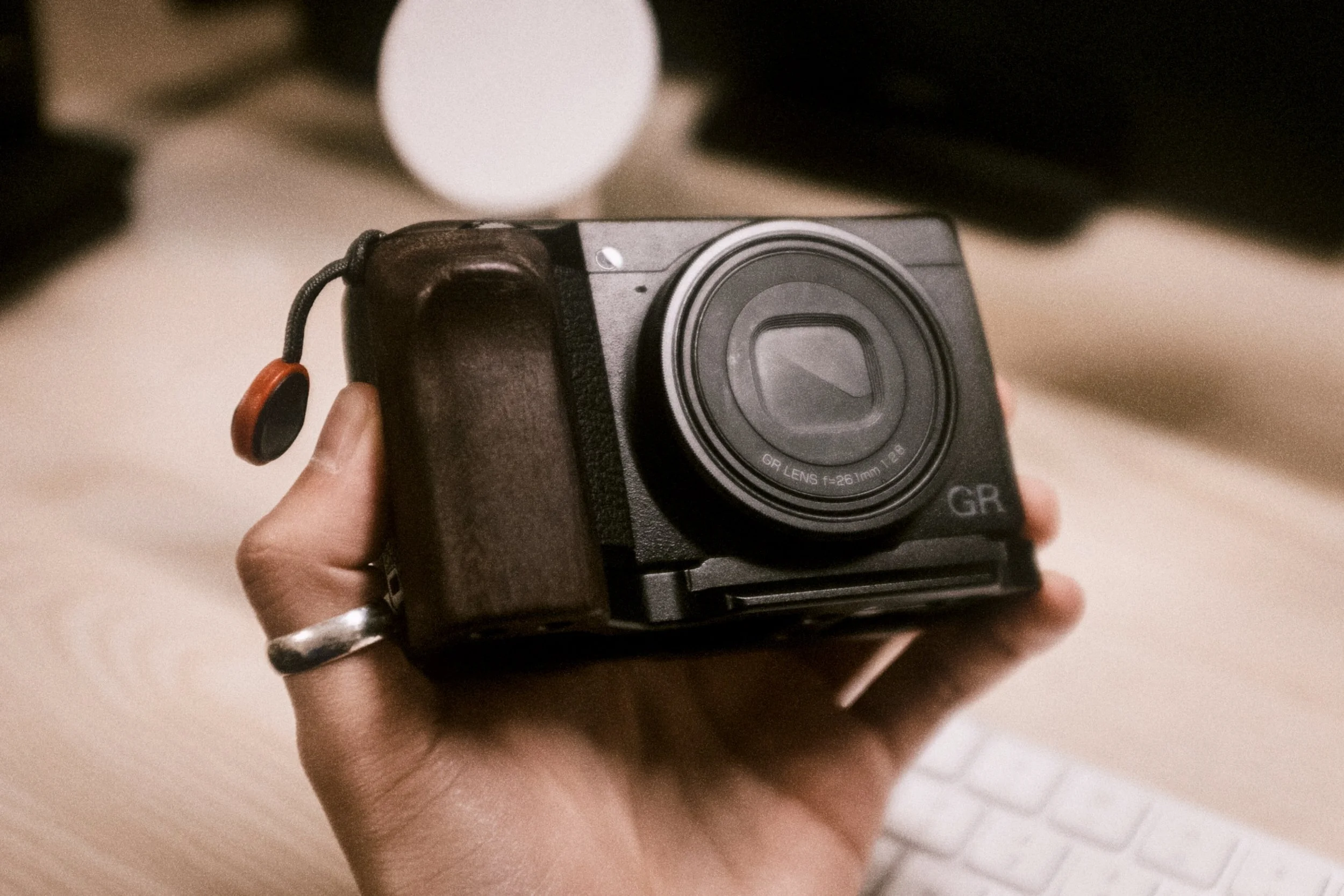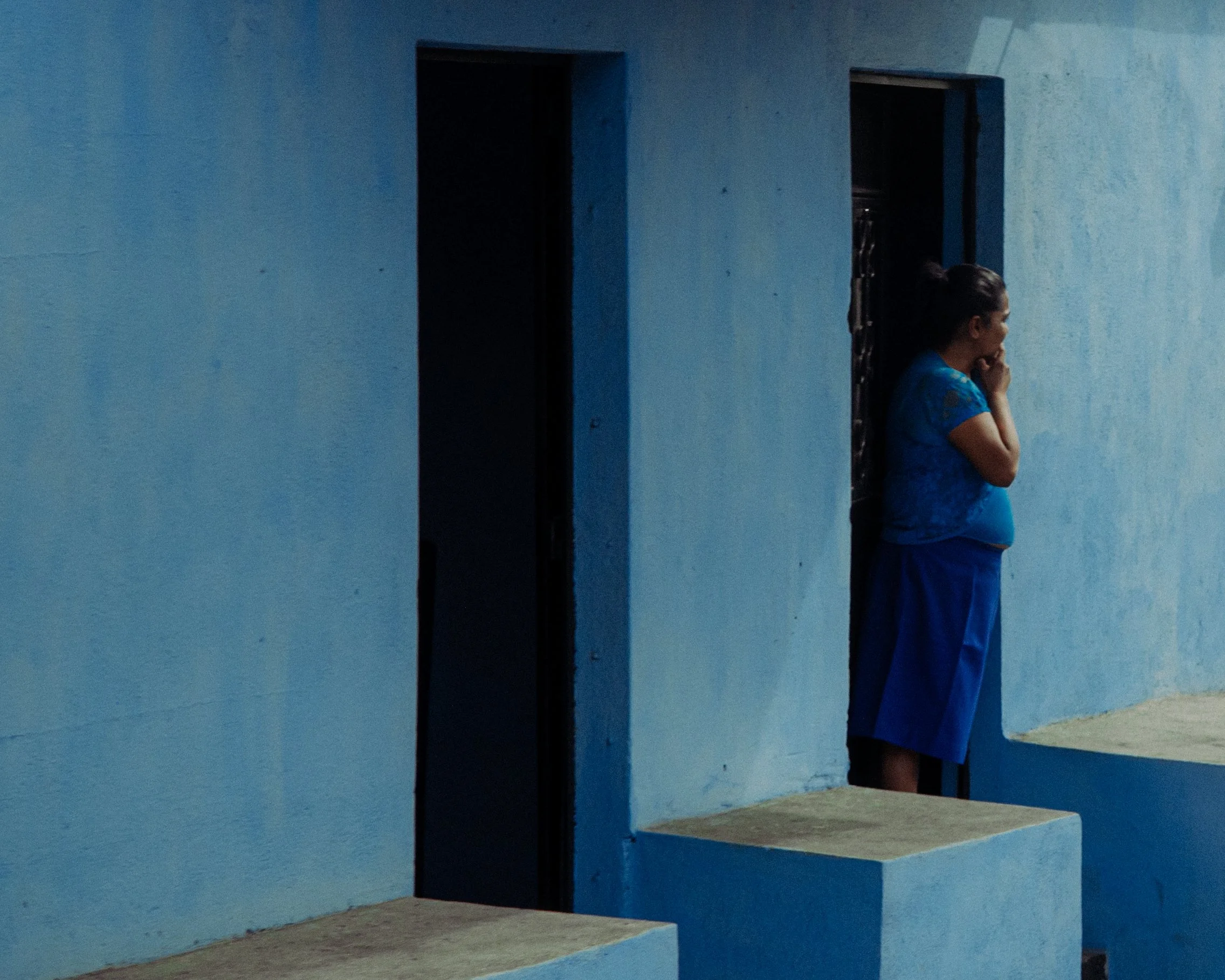the Ricoh GR experience.
The Ricoh GR III was the best camera I ever sold…let me explain.
The Ricoh GR III is the third generation of the fixed-lens point-and-shoot GR camera lineup, sporting a 24-megapixel APS-C sensor. Impressively for its size, it has a built-in ND filter and IBIS for slower shutter speeds.
This little camera holds a very warm place in my heart as the GR III was the first camera I saved up for and was the first camera I used when starting my street photography journey.
The portability, sleek design, and extremely small size made it seem invisible and unrecognizable to my subjects, making me look like a wandering tourist wherever I found myself to be. The design of this camera is timeless yet modern compared to other point-and-shoot-styled cameras out on the market.
The 28mm equivalent lens is sharp and fast but difficult to use. The more I developed my style of photography, the less appealing a 28mm frame was. I would often catch myself cropping into my shots which diminished the resolution of my images. Due to this, I used the camera less and less, preferring my 50mm lens paired with my Fujifilm cameras instead.
The camera collected dust but I didn’t want to sell it. For one, I loved how it looked on my desk and two, it was my very first camera I used and I was not about to get rid of it.
After about of year of not using the GR III, I decided to try out its older brother…the GR IIIx. I traded my GR III for it and instantly fell in love with the focal length. The 40mm equivalent lens allowed me to be “closer” to my subjects or area of interest without having to be physically close. I found myself cropping my images still however this time, each image had a much higher resolution since I didn’t have to crop in as much.
I stopped using my Fujifilm cameras in favor of the GR and took it everywhere with me! I paired it with a wooden grip and the GT-2 teleconversion lens as an added accessory. The teleconvertion lens may not be for everyone but definitely helped me achieve certain stylized and abstract images such as the ones I was getting with my Fujifilm cameras.
During my Guatemala trip earlier this year, I took my GR kit as the only kit during my stay there. The small form factor of the camera helped me blend in and the less gear I had in a foreign country, the better. When I wasn’t using the camera, it fit perfectly in my Peak Design 3L crossbody bag.
I was a bit nervous leaving behind my Fuji kit. I usually bring my X-T5 (because of its reliability and weather sealing) and a secondary camera like the X100F or even the GR itself as a backup option. I’ve been around the United States with ton’s of gear on me but Guatemala was my first trip outside of the country with any sort of camera. Guatemala is not as dangerous as people make it out to be but as a little precaution, I decided to bring the GR since its the smallest and most unobtrusive camera with I own. It took me about 10 minutes of shooting with the GR around Guatemala City to ease my nervousness. The way this camera performed made every image captured seem so full of life.
The only gripe I had was the AF system. I was never big on the snap focus feature on the GR but without it, it made the AF hunt for a bit longer than I would’ve liked. I also use manual settings on all my cameras but the experience of using them on the GR was not the same as using them on the Fujifilm bodies (obviously) and with no OVF/EVF, I had to rely on the small 3-inch LCD screen. The screen doesn’t tilt or move which makes it practically impossible to view on a bright day which in Guatemala is pretty much every day.
Although some of my favorite pictures came from this camera during my trip, all of the downsides were enough to push me to trade the GR IIIx for another Fuji body, the X-E4, as my new EDC.
Reflecting on my journey with the Ricoh GR IIIx, I realize how much this camera contributed to my love for photography despite its technical challenges, like its mediocre AF and limited manual controls compared to my Fuji gear. The GR IIIx pushed me to adapt which greatly enriched my appreciation towards street photography. I recommend this camera to anyone who enjoys point-and-shoots and the challenges associated with the camera however at its steep $1,200+ price tag, there are definitively way better options to choose from in 2025.








